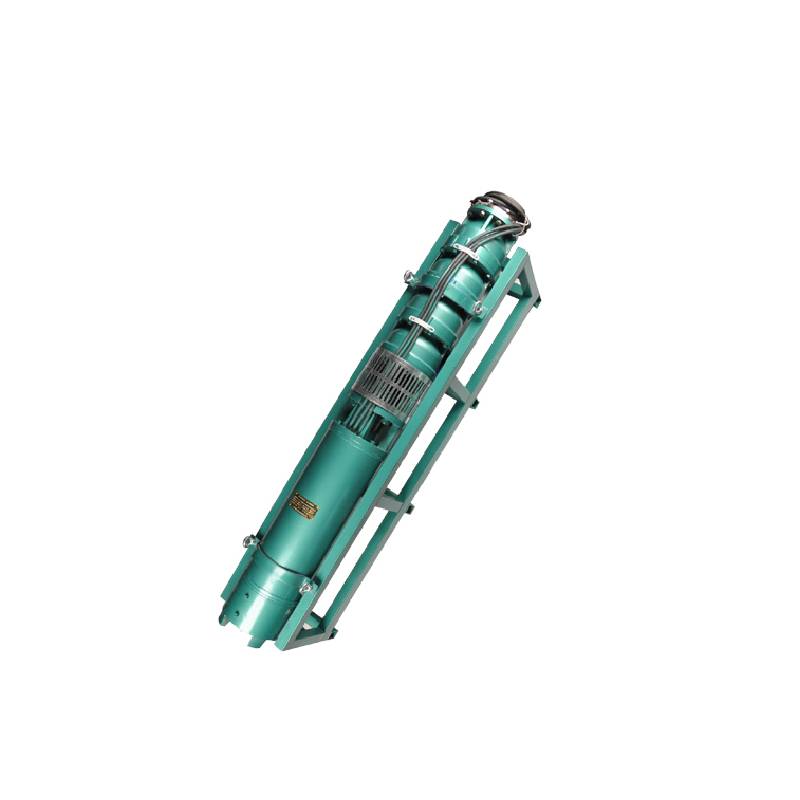Sep . 04, 2024 20:41 Back to list
4 Inch Submersible Pump - Reliable and Efficient Water Solutions
The Versatility and Efficiency of 4-Inch Submersible Pumps
Submersible pumps have become indispensable tools across various industries, from agriculture to municipal water supply systems. Among the various sizes and types available, the 4-inch submersible pump stands out for its compact size and efficient performance, making it an excellent choice for a range of applications.
Design and Functionality
A 4-inch submersible pump is designed to be submerged underwater, typically in wells or boreholes, where it operates efficiently to move water from one location to another. The design of these pumps allows them to work against significant pressure, which is common in deep well applications. They are often installed in deeper wells, pulling water from depths that can even exceed 300 feet.
The pump's motor is sealed inside a waterproof casing, allowing it to remain submerged while operating. This unique design not only prevents water from entering the motor but also provides a cooling effect, allowing the pump to work continuously without overheating. Given their compact size, these pumps are ideal for applications where space is limited, yet high performance is required.
Applications
The versatility of 4-inch submersible pumps is one of their key advantages. In agriculture, they are frequently used for irrigation purposes, allowing farmers to access groundwater efficiently. They are also employed in residential settings for water supply, particularly in areas that rely heavily on well water. Additionally, these pumps play a crucial role in construction sites for dewatering, ensuring that excavation areas remain dry and safe for workers.
4 inch submersible pump

Municipal water supply systems utilize 4-inch submersible pumps to manage water distribution effectively. They are also utilized in drainage systems to remove excess water from low-lying areas, preventing flooding and waterlogging.
Efficiency and Maintenance
One of the most notable features of 4-inch submersible pumps is their energy efficiency. When compared to surface pumps, submersible pumps are known to consume less power due to their ability to push water rather than pull it. This efficiency not only reduces operational costs but also lowers the carbon footprint associated with water management.
Maintenance of submersible pumps is relatively straightforward, thanks to their robust construction. Routine checks on the electrical system, wear components, and sealing mechanisms can keep these pumps operating smoothly for many years. Furthermore, many manufacturers offer advanced monitoring and control systems that provide real-time data on pump performance and can alert users to potential issues before they become significant problems.
Conclusion
In summary, 4-inch submersible pumps are an excellent choice for businesses and individuals requiring a reliable and efficient water management solution. Their versatility in application, coupled with energy-saving qualities and ease of maintenance, makes them ideal for various environments. As demand for effective water solutions continues to grow, the popularity of these compact yet powerful pumps is likely to increase, proving their invaluable role in modern water systems.
-
Submersible Water Pump: The Efficient 'Power Pioneer' of the Underwater World
NewsJul.01,2025
-
Submersible Pond Pump: The Hidden Guardian of Water Landscape Ecology
NewsJul.01,2025
-
Stainless Well Pump: A Reliable and Durable Pumping Main Force
NewsJul.01,2025
-
Stainless Steel Submersible Pump: An Efficient and Versatile Tool for Underwater Operations
NewsJul.01,2025
-
Deep Well Submersible Pump: An Efficient 'Sucker' of Groundwater Sources
NewsJul.01,2025
-
Deep Water Well Pump: An Efficient 'Sucker' of Groundwater Sources
NewsJul.01,2025
-
 Submersible Water Pump: The Efficient 'Power Pioneer' of the Underwater WorldIn the field of hydraulic equipment, the Submersible Water Pump has become the core equipment for underwater operations and water resource transportation due to its unique design and excellent performance.Detail
Submersible Water Pump: The Efficient 'Power Pioneer' of the Underwater WorldIn the field of hydraulic equipment, the Submersible Water Pump has become the core equipment for underwater operations and water resource transportation due to its unique design and excellent performance.Detail -
 Submersible Pond Pump: The Hidden Guardian of Water Landscape EcologyIn courtyard landscapes, ecological ponds, and even small-scale water conservancy projects, there is a silent yet indispensable equipment - the Submersible Pond Pump.Detail
Submersible Pond Pump: The Hidden Guardian of Water Landscape EcologyIn courtyard landscapes, ecological ponds, and even small-scale water conservancy projects, there is a silent yet indispensable equipment - the Submersible Pond Pump.Detail -
 Stainless Well Pump: A Reliable and Durable Pumping Main ForceIn the field of water resource transportation, Stainless Well Pump has become the core equipment for various pumping scenarios with its excellent performance and reliable quality.Detail
Stainless Well Pump: A Reliable and Durable Pumping Main ForceIn the field of water resource transportation, Stainless Well Pump has become the core equipment for various pumping scenarios with its excellent performance and reliable quality.Detail
